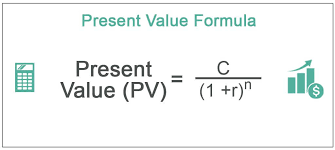If you’re looking to improve employee satisfaction and loyalty, then measuring your employee net promoter score (eNPS) is an essential step. This metric is calculated using a simple formula, based on one question: “On a scale of 0-10, how likely are you to recommend our company as a place to work?” Understanding how to calculate employee net promoter score allows you to determine how likely your employees are to suggest your company to others, providing insight into how engaged and satisfied they are in their employment.
What is Employee Net Promoter Score?
The employee net promoter score is a tool used by organizations to assess the likelihood of their employees recommending the company as a place to work. It is also based on a single question that asks employees to rate, on a scale of 0 to 10, how likely they are to recommend their employer to a friend or colleague. Those who score 9 or 10 are considered promoters, 7 or 8 are passive; and those who score 0 to 6 are detractors. The eNPS is calculated by subtracting the proportion of detractors from the proportion of promoters, with values ranging from -100 to 100. A higher eNPS indicates a more loyal and satisfied workforce, which can lead to higher employee retention rates and ultimately improve business performance.
What Is the Best Employee Net Promoter Score?
To fully understand the concept of the “best” employee net promoter score, remember that this measure is not a one-size-fits-all answer. The appropriate eNPS might vary depending on a number of criteria, including the type of business, the industry, and also the company’s size and location. A high eNPS score is generally regarded as a good sign. This implies that many employees are more inclined to recommend the organization to their friends and colleagues. This can also result in a number of advantages for the firm. However, it includes higher retention rates, enhanced productivity, and more favorable workplace culture.
It is also critical to understand that a high eNPS score does not ensure employee satisfaction or engagement. This statistic should be in conjunction with other employee satisfaction indicators to give a complete picture of employee mood.
What Is the Net Promoter Score for HR?
Applying the Net Promoter Score (NPS) to HR departments is a useful method of assessing employee satisfaction with the HR function. By asking employees the same question used in the traditional NPS calculation, HR leaders can also obtain feedback. This is likely to be on how employees are to recommend HR to a colleague.
This feedback can also be invaluable in identifying areas where HR is performing well and where improvements are needed. For example, if employees are frequently recommending HR to their colleagues, it may be an indicator that HR is providing excellent support and services to the workforce. Conversely, if the NPS score is low, HR leaders can analyze the feedback to understand what is causing the dissatisfaction. However, making changes to address the issue. HR directors may better understand employee mood and enhance engagement and retention by utilizing the NPS to gauge HR satisfaction.
What Is a Healthy Employee Net Promoter Score?
While there is no set standard for a healthy employee net promoter score (eNPS), a score of 50 or more is generally regarded as great. However, keep in mind that the appropriate eNPS varies depending on the industry, company size, and region.
Furthermore, a good eNPS might change over time. It’s critical to evaluate and analyze the score on a regular basis to discover patterns and resolve any areas of concern. Employee morale, workplace culture, and overall employee experience are all factors that can influence the eNPS.
eNPS measures employee satisfaction and engagement to improve workplace happiness and productivity. Organizations may also improve employee retention, boost productivity, and ultimately increase their bottom line by aiming for a strong eNPS score.
What Are the 3 Net Promoter Scores?
Here are the three components of the net promoter scores:
#1. Net Promoter Score (NPS) of Customers
Customers’ Net Promoter Score (NPS) indicates how likely they are to promote a company’s products or services to others. This score is also determined by asking customers, “On a scale of 0-10, how likely are you to recommend our product/service to a friend or colleague? The responses are then classified as detractors (scores 0-6), passives (scores 7-8), and promoters (scores 9-10). The net promoter score (NPS) is by subtracting the percentage of critics from the percentage of promoters.
#2. Net Promoter Score (eNPS) for Employees
The eNPS assesses the likelihood of employees recommending their employer as a place to work. Employees are asked, “On a scale of 0-10, how likely are you to recommend our company as a place to work to a friend or colleague?” Detractors (0-6), passives (7-8), and promoters (9-10). After that, the eNPS is derived by subtracting the percentage of detractors from the percentage of promoters.
#3. Net Promoter Score (BNPS) of a Brand
The BNPS assesses the likelihood of customers recommending a company’s brand to others. Customers are asked, “On a scale of 0-10, how likely are you to recommend our brand to a friend or colleague?”Detractors (scores 0-6), passives (scores 7-8), and promoters (scores 9-10) are then assigned to the responses. The BNPS is then calculated by subtracting the percentage of critics from the percentage of promoters.
Although all three Net Promoter Scores are based on a simple question and formula. They assess distinct aspects of an organization’s effectiveness. Companies can obtain important insights into customer loyalty, staff satisfaction, and brand impression. This is by knowing each of these metrics and their particular application.
Why Is Nps Important?
The Net Promoter Score (NPS) is an important metric because it allows companies to gauge how loyal their customers are and how likely they are to recommend the company to others. The NPS formula and question are simple yet powerful tools that can also be used to quickly assess customer satisfaction and track changes over time. This information can help businesses identify areas where they need to improve and make data-driven decisions to address those issues.
Furthermore, the NPS can also be used to measure employee satisfaction and engagement through the Employee Net Promoter Score (eNPS). Organizations can learn about employee attitudes and work environments by asking employees if they would recommend working there. This data can help the organization enhance its culture and employee experience, boosting retention and productivity.
Overall, the NPS is important because it provides a standardized way to measure customer loyalty, employee satisfaction, and brand perception. Companies can make better business and customer decisions by using this measure and other data.
Employee Net Promoter Score Formula
The employee net promoter score (eNPS) formula is a simple calculation that involves subtracting the percentage of detractors from the percentage of promoters. Here’s how it works:
- Ask employees the following question: “On a scale of 0-10, how likely are you to recommend our company as a place to work to a friend or colleague?”
- Divide the replies into three categories: detractors (0-6), passives (7-8), and promoters (9-10).
- Calculate the percentage of respondents in each group by dividing the number of respondents in each group by the total number of respondents.
- To calculate the eNPS score, subtract the percentage of detractors from the percentage of promoters.
For example, if you surveyed 100 employees and found that 30 were detractors, 40 were passives, and 30 were promoters, you would calculate the eNPS as follows:
Detractors’ percentage = 30/100 x 100 = 30%
Passives as a percentage = 40/100 x 100 = 40%
Promoter percentage = 30/100 x 100 = 30%
eNPS = 30% – 30% = 0
Positive eNPS scores indicate more promoters than detractors among employees, while negative scores indicate the opposite. The higher the score, the more loyal and engaged the employees are.
How to Calculate Employee Net Promoter Score
Calculating the employee net promoter score (NPS) involves a simple four-step process:
- Ask employees the eNPS question: “On a scale of 0-10, how likely are you to recommend our company as a place to work to a friend or colleague?”
- Divide the replies into three categories: detractors (0-6), passives (7-8), and promoters (9-10).
- Calculate the percentage of respondents in each group by dividing the number of respondents in each group by the total number of respondents.
- To calculate the eNPS score, subtract the percentage of detractors from the percentage of promoters.
A positive eNPS score shows that there are more promoters than detractors, while a negative score indicates the inverse. The higher the score, the more loyal and engaged the employees are. Calculating eNPS is a straightforward process that can provide valuable insights into employee satisfaction and engagement. Companies can discover trends and improve workplace culture and employee experience by tracking eNPS scores.
Employee Net Promoter Score Question
The Employee Net Promoter Score (eNPS) question is a single-question survey that asks employees to rate their likelihood of recommending the company as a place to work to others. The question typically comes as follows:
“On a scale of 0-10, how likely are you to recommend our company as a place to work to a friend or colleague?” Employees choose a number from 0-10, with 0 being exceedingly unlikely and 10 being highly likely. Critics (0-6), passives (7-8), and promoters (9-10), with the eNPS score calculated by subtracting detractors from promoters.
The eNPS inquiry is straightforward to administer and provides useful information about employee satisfaction and engagement. The question gauges employee happiness and loyalty by assessing their likelihood of recommending the organization to others. Companies can improve by tracking eNPS scores over time and addressing issues.
FAQs
What is a good employee's Net Promoter Score?
Scores ranging from -10 to +20 are considered typical. If the scores are better than +10, you can be proud of your company’s level of employee engagement.
What exactly is a low NPS score?
You have a good NPS score if it is between 30 and 40. You may be well behind the leaders with scores like 55, 60, and so on. However, if your score is 25 or lower, it is considered a poor NPS score
How significant is the Net Promoter Score?
Net Promoter Scores assist organizations of all sizes in gathering feedback fast, developing a strategy for improving experiences across the customer journey, and increasing brand loyalty and income for long-term success.
Related Articles
- ENPS: Meaning, Calculation, Software, Score & Survey
- EMPLOYEE ID: Benefits, Formats and Uses
- NPS CALCULATION: Complete Guide & Tips to Know
- NPS EMAIL: Complete Guide
- CUSTOMER EXPERIENCE: Management, How to Improve, Model & Importance






